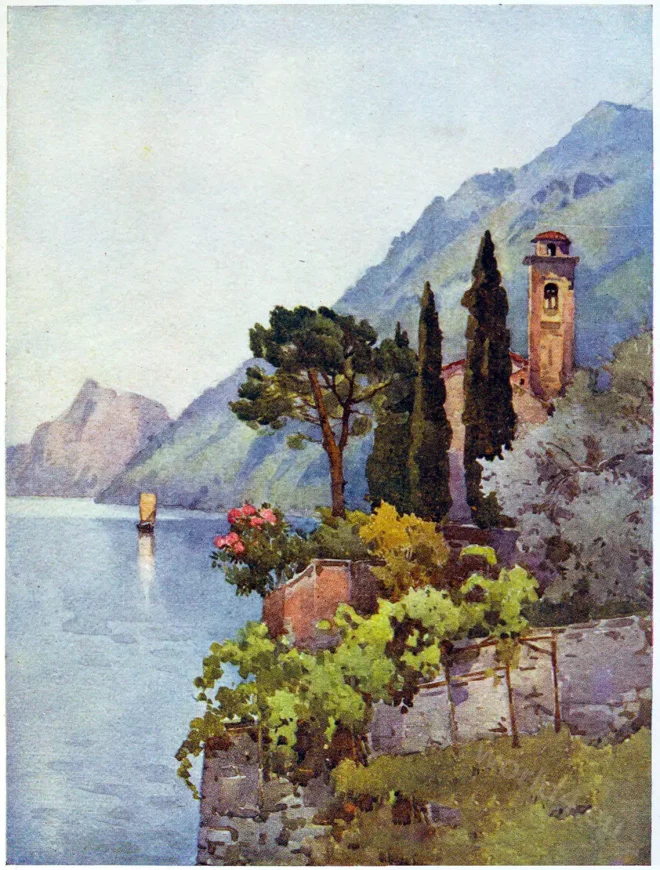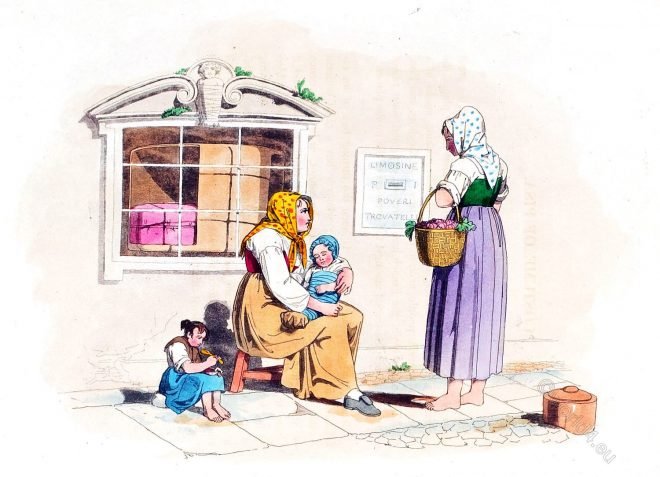The Strada maggiore is a street leading from the gate of the same name to the centre of the city
Tag: Italian customs
Traditional Italian dress, culture and customs of the various regions.
Lake Lugano. The Italian lakes.
Lake Lugano is a glacial lake with Mediterranean climate, between the Canton of Ticino in Switzerland and Lombardy in Italy.
The Palazzo Vecchio at Florence by Alexandre Dumas.
The Palazzo Vecchio (“old palace”), as the seat of the city parliament, represented the center of secular power in 14th century Florence.
The dance of the Tarantella. Italian scenery.
What the fandango is to the Spaniards, the tarantella is to the Neapolitans.
Devotions, confessional and church scenes in 19th century Italy.
A female at her devotions. Costume near Florence. In Italy, the young and the old alike frequent the churches.
Bouquetières. Flower seller in Florence. Journey through Italy, 1840.
The flower seller making a sales pitch, the city of Florence in the background.
Locals of Pisa in typical costume in front of an orphanage.
Locals of Pisa with English neckerchief and french handkerchief in front of an orphanage.
Historical costume from Tresnuraghes, Sardinia. 19th century.
Costume de Tresnuraghes (Sardeigne). Colección de láminas en colo par François-Claudius Compte-Calix, 1801.
Zappatore Sassarese. Field worker from the Sassari area of Sardinia.
Sardinian field worker from the Sassari area of Sardinia. Historical Italian folk costume from Sardinia.
Italy. Rural costumes. The farmers of the Terra di Lavoro. The Pifferari.
The figures represent inhabitants of Monte Cassino, the old Casinum, in the Terra di Lavoro, as they walk through the streets of Rome as models and through the capitals of the mainland as musicians.










